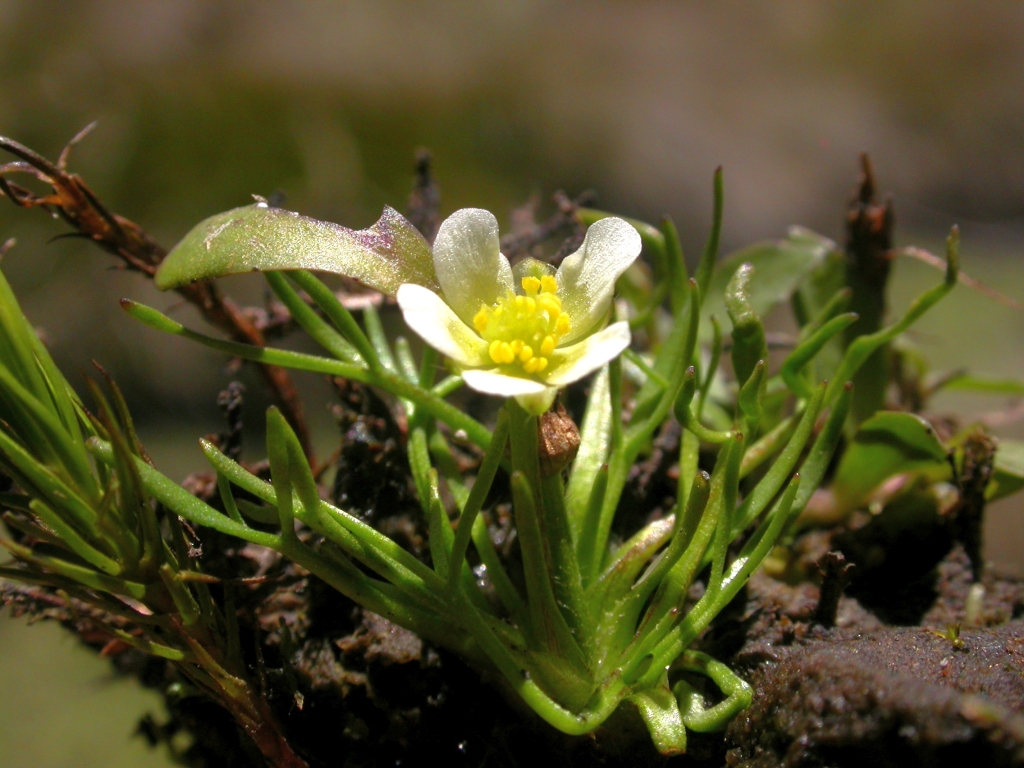Ranunculus millanii
F.Muell. Dwarf ButtercupTufted, stoloniferous perennial with fibrous roots, to c. 8 cm high. Leaves glabrous or with scattered fine, spreading hairs; petioles 5–8 cm long; lamina deltoid to ovate in outline, c. 1–2 cm long and wide, pinnate, the lobes usually again divided, ultimate segments linear, 0.5–2 mm wide. Flowering stems ascending to erect, sub-equal to leaves, 1-flowered; sepals 5(–6), spreading, elliptic to ovate, 2–5 mm long, glabrous or sparsely hairy; petals 5 (rarely more), obovate, 3–8 mm long, 2–5 mm wide, white, cream or yellow, dull or glossy; nectary a minute pit, lobeless or with a minute triangular lobe to c. 0.5 mm long; stamens 8–35. Achenes c. 10–20, ovate to obovate, lenticular, 2–2.5 mm long, smooth on sides; beak c. 1 mm long, usually slightly curved; receptacle hispid between achenes, glabrous in the staminal zone. Flowers Nov.–Feb.
HSF, HNF, VAlp. Also NSW, ACT. Scattered and not uncommon throughout the alps, but virtually restricted to shallow pools and depressions prone to inundation.
Yellow-flowered forms of the species are thought to be the result of hybridization with nearby species (typically R. graniticola, R. collinus and R. victoriensis). Hybrids between R. millanii and R. graniticola form the basis of the name R. ×ligulatus. See Eichler & Walsh (2007) for a full list of known hybrids in Ranunculus.
Walsh, N.G. (1996). Ranunculaceae. In: Walsh, N.G.; Entwisle, T.J., Flora of Victoria Vol. 3, Dicotyledons Winteraceae to Myrtaceae, pp. 35–63. Inkata Press, Melbourne.
 Spinning
SpinningEichler, H.; Walsh, N.G. (2007). Ranunculus. In: Wilson, A., Flora of Australia 2, Winteraceae to Platanaceae, pp. –. Australian Biological Resources Study, Canberra, Australia.


